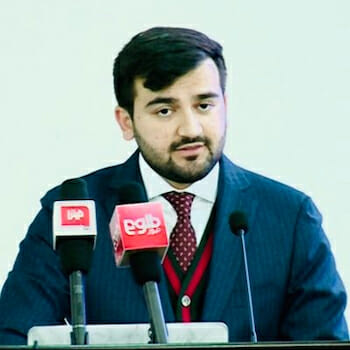
Afghanistan: Getting to the Root of the Problem
In October of 2018, the Special Inspector General for the Afghanistan Reconstruction (SIGAR) noted that the government of Afghanistan controlled or influenced only 55% of the country’s territory. This amount is slightly lower than the 56% of territory that the government controlled in October of 2017 and is the lowest since the percentages of territorial control began being tracked in 2015 when the government-controlled 72% of the country.
The percentage of territory not controlled by the government of Afghanistan are either controlled by the Taliban, the Islamic State (Daesh) or contested by multiple groups including tribal militias. These percentiles fit into the larger trend of the Afghan government losing control and influence of its territory to extremist groups around the country.
The expansion of territory controlled by extremist groups is concurrent with the enlargement of extremist groups in the country. In 2014, it was estimated that a total of 60,000 individuals fought on behalf of the Taliban in Afghanistan. As of March 2018, this number has increased to approximately 72,000 individuals fighting on behalf of both the Taliban and Daesh. Uniquely, the vast majority of these fighters are Afghan nationals with only 7% of the fighters being foreign.
The majority of those fighting in both the Taliban and Daesh are young males from poor and impoverished backgrounds in both rural and urban areas that feel marginalized by society.
The increase in the forces of extremist groups directly correlates with many individuals in Afghanistan reaching the ages between the ages 15 to 30 at which they are most susceptible to recruitment by extremist organizations. Specifically, in 2014 37% of Afghanistan’s population was between the ages of 15 and 39. Additionally, half of the population was under the age of 18.
These demographics indicate that a wide percentage of the Afghanistan population is currently susceptible to recruitment and that a vast swath of the country will be vulnerable to recruitment for decades to come.
The majority of those recruited to the Taliban are youth, particularly young males. Despite the ideological bent of the Taliban, the majority of its recruits do not join for such reasons. In fact, research conducted in Afghanistan by the Institute for War and Peace found that nearly 70% of young Taliban recruits joined the group, not due to ideology but for economic and security realities. Specifically, they joined because of rampant unemployment, few opportunities for societal advancement, and a lack of confidence in the Afghan government’s ability to provide basic rights.
In short, the Taliban and other extremist groups recruit by successfully playing off of the many legitimate grievances that youth have. These grievances stem from a fundamental failure of the government of Afghanistan to effectively demonstrate that the state has the best interests of the country’s citizenry at heart. This is in no small part due to the rampant corruption and nepotism that is highly visible to the public and is found at all levels of the country’s government.
In 2017, Transparency International, a global corruption watchdog, ranked Afghanistan as the fourth-most corrupt country on earth. This corruption is wide-ranging and has tangible effects on the population. For instance, in rural areas of the country, one of the only opportunities available to youth is joining the military. However, military payments to soldiers are sporadic, and unreliable due to embezzlement at higher levels. These individuals accept the only other means of employment, joining a violent extremist group such as the Taliban. Additionally, payments given by the Taliban are more reliable, and at times higher than those received by the Afghan army, making it an attractive employment option.
The rampant corruption across the government also makes youth more susceptible to recruitment. A 2016 report by the Brookings Institute found that individuals with higher levels of education are significantly less susceptible to extremist recruitment. Therefore, in a country suffering from extremism as is much of Afghanistan, it would be logical to ensure that its youth have access to quality education.
To its credit, the government of Afghanistan has made genuine efforts to allocate more funding to open schools and other educational institutions in rural areas of the country. However, this effort has been significantly undermined by corruption.
For instance, a SIGAR report noted that the Minister of Education under former president Karzai falsified the number of schools in rural areas of the country in order to obtain more funding. The non-existent schools that were listed were given substantial funding through the ministry. This can only draw the conclusion that the funding was embezzled at the expense of school children across Afghanistan.
Corruption in Afghanistan also materializes through the rampant nepotism that can be found in both the public and private sectors of the country. In short, many qualified individuals with advanced degrees are unable to find jobs in their fields, while unqualified individuals are given lavish positions due to their personal connections or tribal affiliations.
For instance, many individuals from the highest ranked institutions in the country can be found unemployed while individuals with unrelated, or even no degrees can be found in senior posts in government ministries. This understandably causes resentment amongst those who have worked hard to obtain a good education and have found that all jobs are taken by unqualified, but well-connected individuals.
Rampant corruption is even visible in the very organizations established by the international community to combat the practice. In its October 2018 report, SIGAR stated that the U.S. funded the Justice Center, a mechanism overseen by the attorney general to combat corruption which is ineffective. Specifically, the report stated that “The attorney general’s performance is deficient, his accomplishments are lacking, and he fails to cooperate with the U.S. Embassy on anti-corruption matters.” Additionally, it claimed that the body was not able to account for all of the funds it was given and that it failed to give specifics of corruption-related arrests it claimed to make.
Since 2001 the United States and the international community have invested unquantifiable blood and treasure into fighting terrorism and other forms of violent extremism in Afghanistan. These efforts have seen much success, which would not have been possible without the cooperation and assistance of the people of Afghanistan. However, the international community’s efforts have failed to address the root causes that leave so many youths vulnerable to recruitment by extremist groups.
It is imperative that the international community no longer turns a blind eye to the rampant corruption in Afghanistan. It is clear that the defeat of extremism in Afghanistan will not be through military means, but rather in helping the Afghan people construct a legitimate government that serves its people.
In order to do so, corruption must be recognized and treated as one of, if not the main threat to the security and stability of the country. In order to do so, the money invested into the country must be strictly monitored by donors, and those found to be misusing funds must be held to account.

